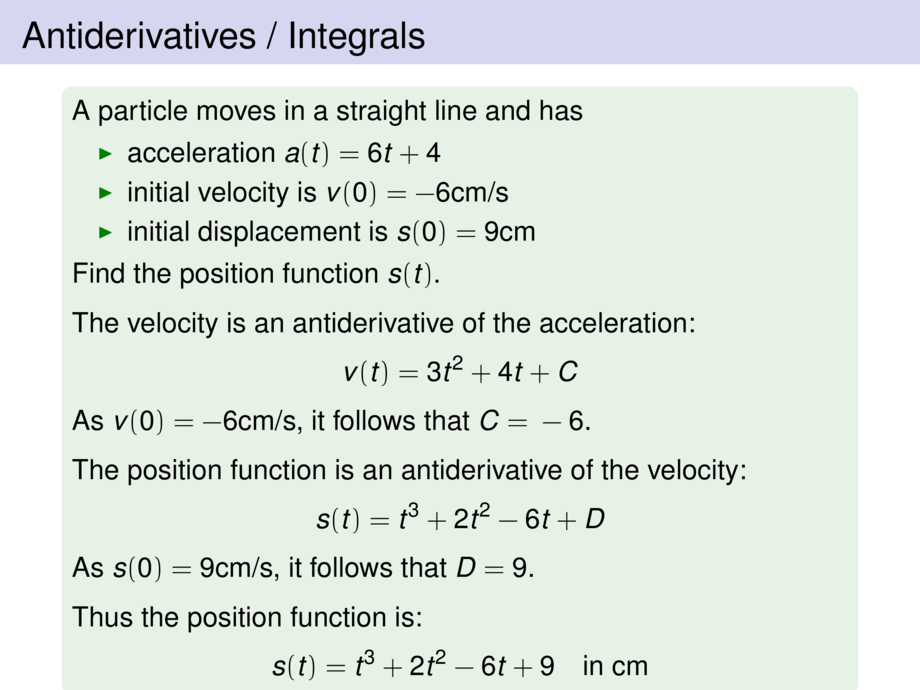



































































































94/116
\begin{frame}
\frametitle{Antiderivatives / Integrals}
\begin{exampleblock}{}
A particle moves in a straight line and has
\begin{itemize}
\item acceleration $a(t) = 6t + 4$
\item initial velocity is $v(0) = -6$cm/s
\item initial displacement is $s(0) = 9$cm
\end{itemize}
Find the position function $s(t)$.
\pause\medskip
The velocity is an antiderivative of the acceleration:
\begin{talign}
v(t) = \mpause[1]{3t^2} \mpause{+ 4t}\mpause{ + C}
\end{talign}
\pause\pause\pause\pause
As $v(0) = -6$cm/s, it follows that $C = \pause -6$.
\pause\medskip
The position function is an antiderivative of the velocity:
\begin{talign}
s(t) = \mpause[1]{t^3} \mpause{+ 2t^2}\mpause{ - 6t}\mpause{+ D}
\end{talign}
\pause\pause\pause\pause\pause
As $s(0) = 9$cm/s, it follows that $D = \pause 9$.
\pause\medskip
Thus the position function is:
\begin{talign}
s(t) = t^3 + 2t^2 - 6t + 9 \quad \text{in cm}
\end{talign}
\end{exampleblock}
\end{frame}

